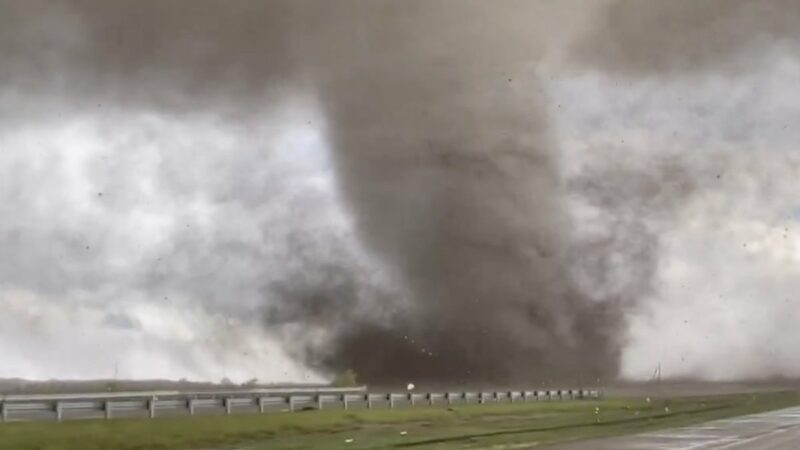Day Hiking Essentials: How to Prepare and What to Bring on Your Outdoor Adventures
Nearly 60 million Americans went hiking at least once in 2022, and that’s up from 34.5 million a decade earlier. Day hiking is one of the most popular outdoor activities, in part because it doesn’t require an immense amount of training, skill, or gear.
Videos by Outdoors
It’s also frequently a free to low-cost way to exercise, see new places, and experience the great outdoors.
Hiking can be as easy as a leisurely walk along a well-maintained path or as difficult as a steep ascent up a massive peak. It’s an excellent sport to grow into and enjoy for a lifetime, even as your fitness level waxes and wanes alongside the demands of life.
Day hiking may be an easy outdoor activity for beginners, but that doesn’t mean you don’t need to be prepared with the proper knowledge and gear. Hiking can be dangerous if you’re not adequately prepared for a trek’s weather, terrain, and physical demands.
Whether you’re just starting or you’re an experienced hiker, you shouldn’t hit the trail without the hiking essentials. Here’s your guide to preparing for and gearing up for a day hike—whether it’s a tame walk in nature or a trek up Yosemite’s Half Dome.
Are you ready to level up your day-hiking game?
Basic Logistics: How to Plan for a Day Hike
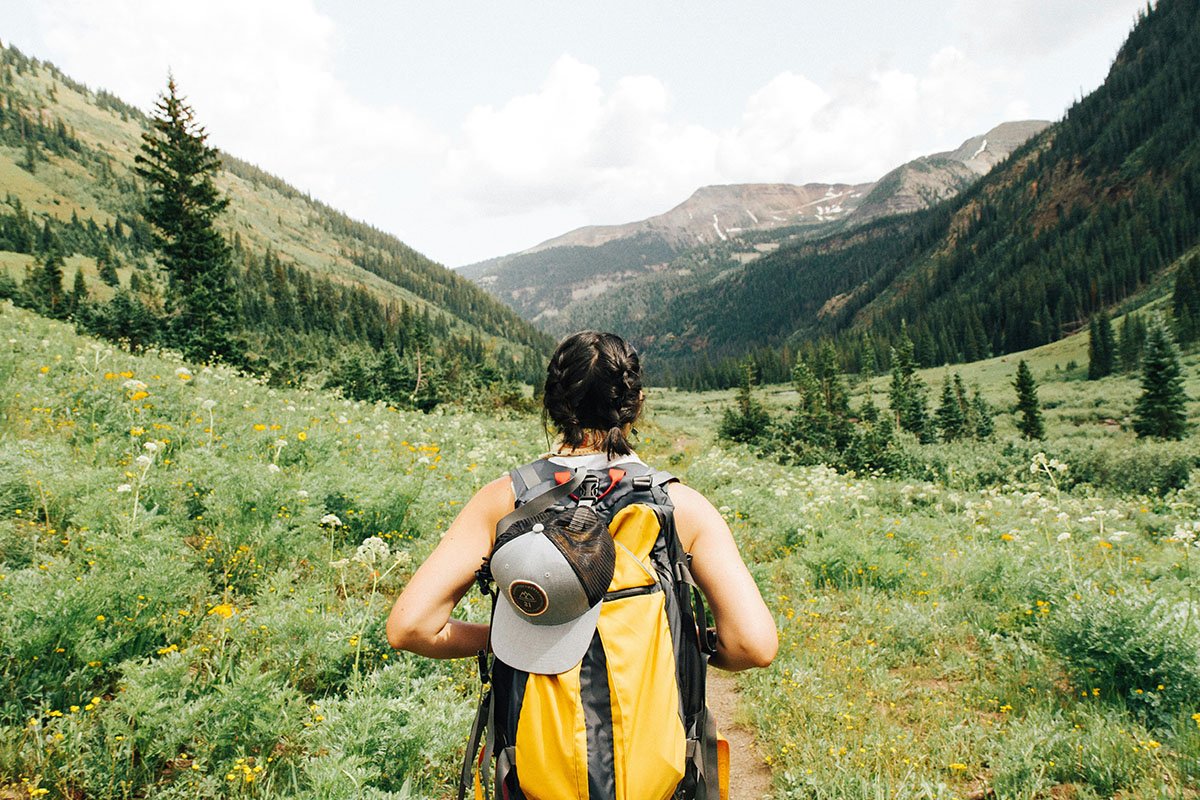
Exploring the unknown is fun, but knowing where you’re going is the best practice when you’re hiking. As you’re planning a day hike, research the trail in advance. Use AllTrails or a similar platform to figure out the trail’s length and difficulty level (as rated by others who have gone before you).
Pay attention to elevation gains and the type(s) of terrain you’ll be hiking through. Do your best to find out in advance if there are water crossings, tight switchbacks, uneven terrain, or areas with steep drop-offs.
Research if there are any other noteworthy obstacles you may need to mentally or physically prepare for. Will you be hiking on sand or dirt? Loose rock or scree? Knowing all of this in advance will dictate, to some degree, what you bring hiking.
You can also prepare for your day-hiking trip by checking what the weather will be like where you’re going on the day that you’ll be there. This way, if necessary, you can plan by adjusting your gear for inclement weather.
Day hikes, by definition, are hikes that you can complete in one day (meaning, you’re not sleeping overnight on the trail like you would on a backpacking trip or thru-hiking trip).
That said, some day hikes turn into overnight trips when people run into trouble, so it’s best to bring along some emergency items as part of your essential gear. We’ll cover day-hiking essential gear below, but first, here’s what to wear.
What to Wear on a Day Hike
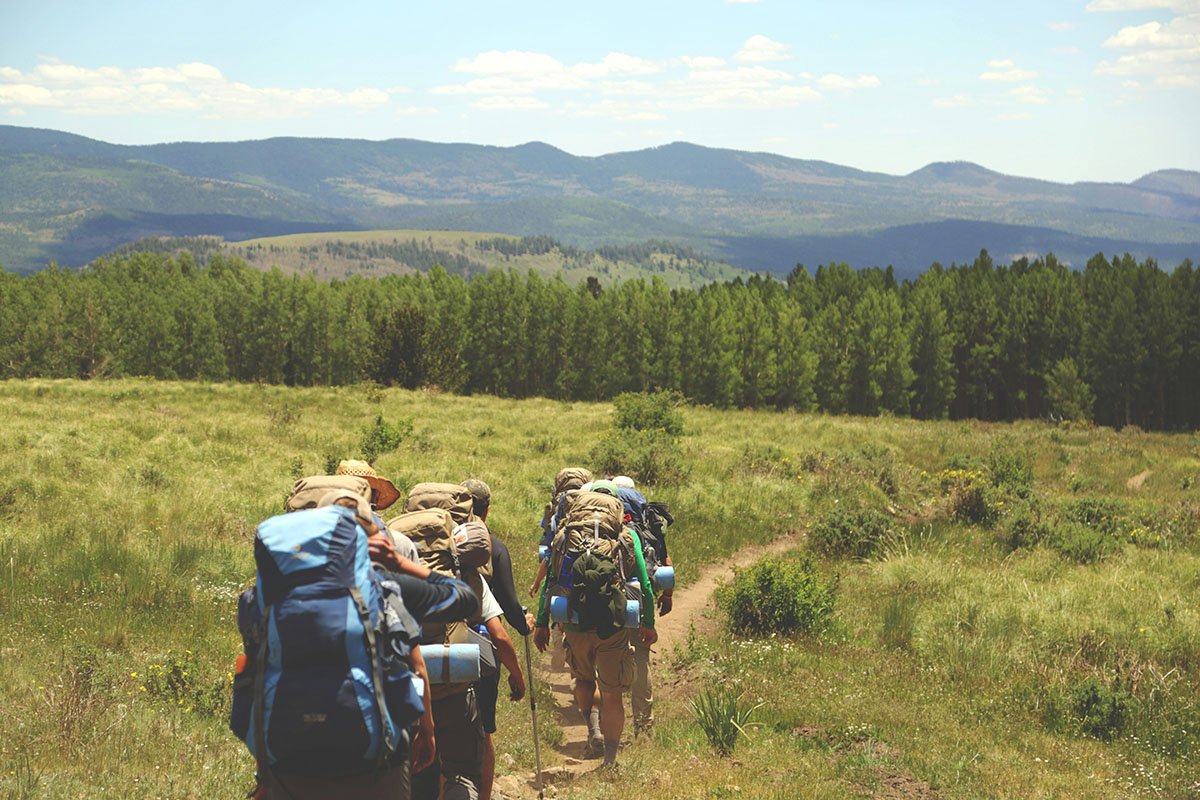
The clothes on your back are pretty important in terms of hiking gear. Get it right, and you won’t even notice what you’re wearing. Get it wrong, though, and you’ll be miserable.
First and foremost, what you wear on a day hike will depend very much on the season and the location of your hike. You wouldn’t wear the same outfit on a summer hike in Joshua Tree National Park that you’d wear on a spring hike in Rocky Mountain National Park, after all.
If the temperature is warm and sunny, wear moisture-wicking clothing, including a hiking shirt, hiking shorts, and a hiking hat. Look for clothing that is lightweight and offers sun protection in the form of both coverage and, ideally, a UPF 30 rating or higher.
If you’re hiking in an area where the temperature dips at dawn and dusk, you’ll want to be prepared for that. Throw a pair of lightweight hiking pants in your pack for times when the sun’s not up.
When it’s a shoulder season (spring or fall), what you wear hiking will be a little more complicated. Layers are your friend in complicated weather, and layering your clothing is one of experienced hikers’ top hiking tips for beginners.
How to Layer
In general, hiking layers should include:
- A moisture-wicking base layer
- An insulating layer
- A waterproof and windproof outer layer (like a rain jacket)
If you’re hiking in the winter in a warmer climate, you may be able to wear short sleeves and a pair of lightweight hiking pants. Bring extra layers for dawn and dusk, and don’t forget proper sun protection in the form of a hat or UPF 30+ rated clothing, even in the winter.
If you’re hiking in the winter in a cold climate, you’re going to need to wear all the layers mentioned above on your top half, plus winter hiking pants on your bottom half.
You’ll also need some extras, like a warm hat, gloves, and warm hiking socks. Consider materials like merino wool for your insulating layer. Wool socks will be a nice addition, too.
Last, but certainly not least, your hiking-essentials wardrobe requires hiking shoes. Invest in some sturdy and comfortable hiking boots or trail-running shoes.
Historically, hiking boots were required hiking gear, but many people today prefer to hike in trail runners since lightweight hiking shoes tend to be comfortable over long distances.
Whether you choose boots with ankle support or lightweight shoes like trail runners for your day hike will depend on personal preference, the amount of time you plan to spend on the trail, the terrain you’ll be crossing, and the weather you’ll encounter.
Good socks are also hiking essentials. Moisture-wicking socks are your best bet to keep your feet dry as you exercise. Don’t underestimate a good pair of socks and shoes as you build your outdoor gear. Happy hikers have happy feet.
How to Stay Hydrated and Nourished on Day Hikes
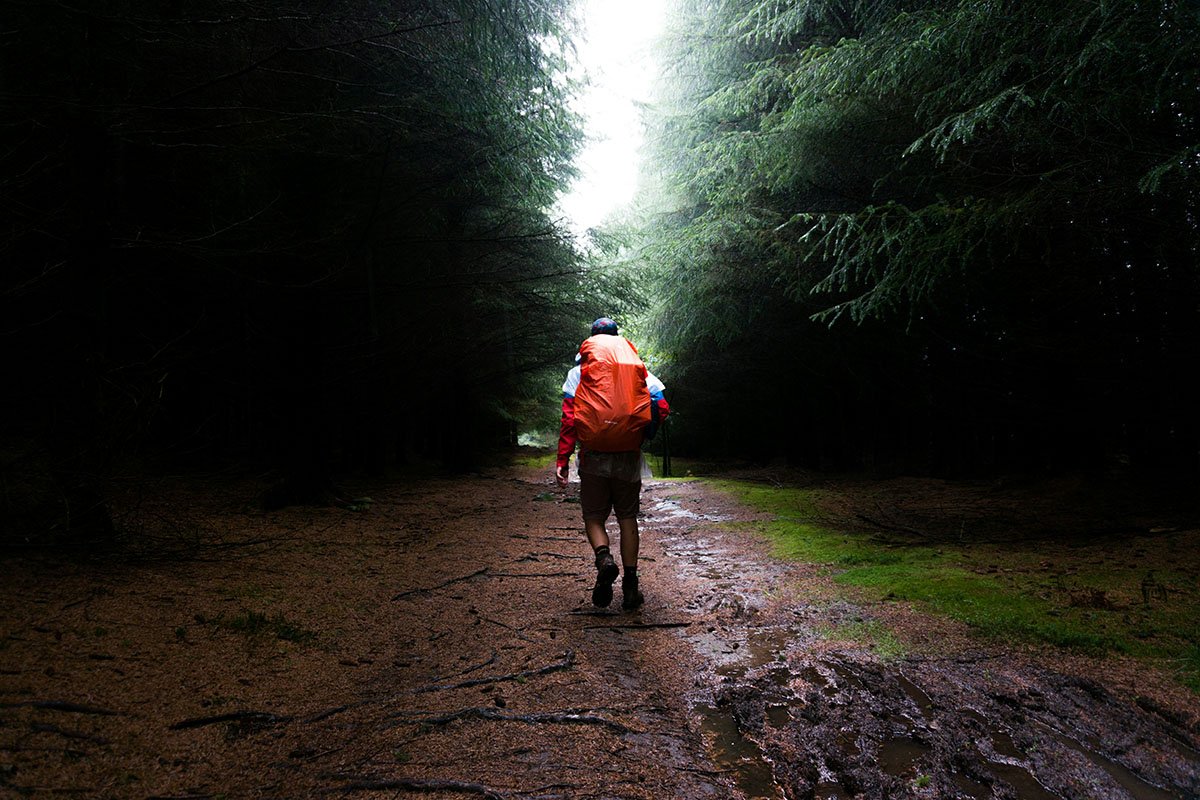
Not having enough food and water while day hiking is a common mistake many hikers make. As a general rule, your hiking gear should facilitate and include 1-2 liters of water per person for every two hours of hiking.
Keep in mind that when it’s hot outside, you will go through much more water. When it’s warmer outside, you will want to make sure you bring more water with you.
The best way to stay hydrated and well-nourished on a day hike is to prepare in advance by bringing enough food and more than enough water along with you on the day.
Having the proper gear will make a world of difference. Invest in an appropriately sized water bottle that clips into a hip belt or a hydration pack with a water bladder to carry your water.
Your day hike packing list should also include food—for instance, nutrient-dense trail snacks like bars and nuts that deliver a mix of fats, proteins, and carbohydrates.
Each person’s caloric intake while exercising outdoors is going to be different, so the best general advice is to figure out your calorie needs in advance, and then plan to bring extra food—even more than you think you’ll need.
Note: Day hikes are not the appropriate time to skimp on calories. Consult with a medical professional before you hit the trails if you have any questions or concerns about your specific needs.
Tips for Eating and Drinking Enough on a Day Hike
Rather than chugging a bunch of water on infrequent rest breaks, train yourself to take sips frequently as you hike. It’s the same story with food—choose small snacks on the go over a big feast when you reach the summit halfway through your day hike.
As you sweat, you lose electrolytes, so the best way to maintain your energy level during a hike is to replenish those electrolytes with trail snacks or a sports drink that will help you regain the electrolytes that you have lost on the trail.
If you need help remembering to snack or sip your water, consider setting a timer that repeatedly goes off on an interval. Keep a Ziploc bag full of salted cashews or an open Clif bar in your pocket so it’s easy to access.
The best practice is to eat and drink before you feel hungry or thirsty while hiking.
If you’re hiking at altitude, be aware that you may need to drink more water than usual. And if you’re hiking in cold weather, it’s especially important to keep yourself accountable and hydrated, because you might not feel as thirsty as you do when it’s warm.
Consider bringing a warm liquid to sip on instead of ice-cold water.
Common Dangers While Day Hiking
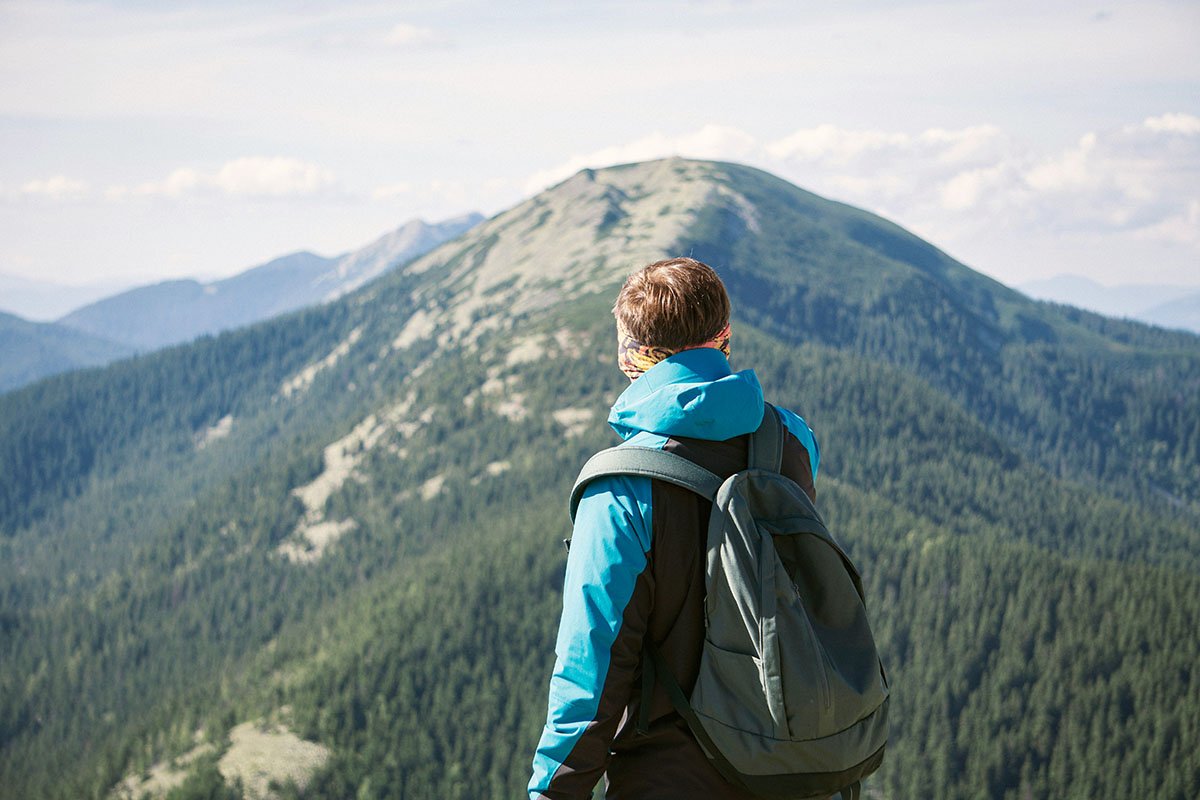
Slips and Falls
When you’re hiking, there’s the chance you could trip, slip, or fall. Sprained ankles are a common hiking injury as hikers travel across uneven terrain or go downhill on loose rocks. Wet or slick surfaces due to rain, ice, or snow can also create hazards on the trail.
The best way to prevent these injuries is to be diligent. Keep an eye on the trail at all times and never go too close to an edge, even for that selfie you’re dying to take and share.
Having the proper footwear for the trail conditions will also help you stay upright and in control. Consider adding trekking poles to your gear, if you need some extra stability.
Getting Lost
We’ve all been there—you had a good handle on where you were when you started hiking, but now it’s dark, and you can’t remember which way you came from. This situation is really common for day hikers trying to get back to their cars, especially if they’ve started to lose daylight. Panic starts to set in.
Prepare for this scenario by using our day-hiking essentials list below. When you have items on hand such as a paper map, a personal locator beacon, and/or a cell phone with a downloaded map, you don’t need to panic when you feel a little turned around.
Remember, you may lose cell service while day hiking, so you cannot always rely on the internet to prevent you from getting lost. We always recommend having a backup for navigation.
Dehydration
As you hike, your body loses water. If you don’t replenish that water, you’ll become dehydrated. Common signs and symptoms of dehydration include headache, dark-colored urine, dry mouth, dry lips, feeling thirsty, lightheaded, and/or feeling tired.
Water is the most important of all the day-hiking essentials because, without it, your body can’t function properly. Put a water bottle at the very top of your hiking packing list, and, while you’re out there hiking, don’t let yourself get to the point where you’re feeling symptoms of dehydration.
A much less common condition is hyponatremia, which is when your body’s salt concentration becomes dangerously low. Prevent “over-hydration” by replenishing your body’s electrolytes and sipping water continuously while hiking instead of chugging liters at a time.
Extreme Weather
When temperatures plunge or soar, day hiking can become dangerous. In hot weather, heat-related illnesses such as heat stroke and heat exhaustion can be deadly.
Similarly, in cold weather, hypothermia and frostbite can set in quicker than you’d think.
Prepare for extreme temperatures by researching conditions ahead of time and bringing exactly what you need to stay safe. To prevent burns from sun exposure, wear protective clothing and sunscreen. To prevent burns from wind, wear protective clothing.
Unfortunately, you can’t always prepare for extreme weather. When the weather turns switches up on you in the middle of your day hike, you may face flash flooding, landslides, avalanches, rain, dust, or snow storms.
When you’re packing for your upcoming hike, add emergency supplies to your day-hiking essentials, and always be aware of signs that extreme weather is heading your way so you can get to safety.
Bites, Stings, and Other Wildlife Encounters
When you’re hiking outdoors, you’re in animals’ territory. Depending on your location and the time of year, you may be hiking near venomous snakes like rattlesnakes, disease-carrying insects like mosquitos and ticks, and large mammals like bears and mountain lions.
For the most part, if you give animals space, they won’t bother you. However, there are times when a wildlife encounter is inevitable. Consider adding specific items to your hiking gear that could prevent such encounters, such as insect repellant and bear spray.
Before you head out on your hike, educate yourself on the types of wildlife that live in the area where you’re hiking and how to best handle encounters.
Essential Day-Hiking Gear Checklist
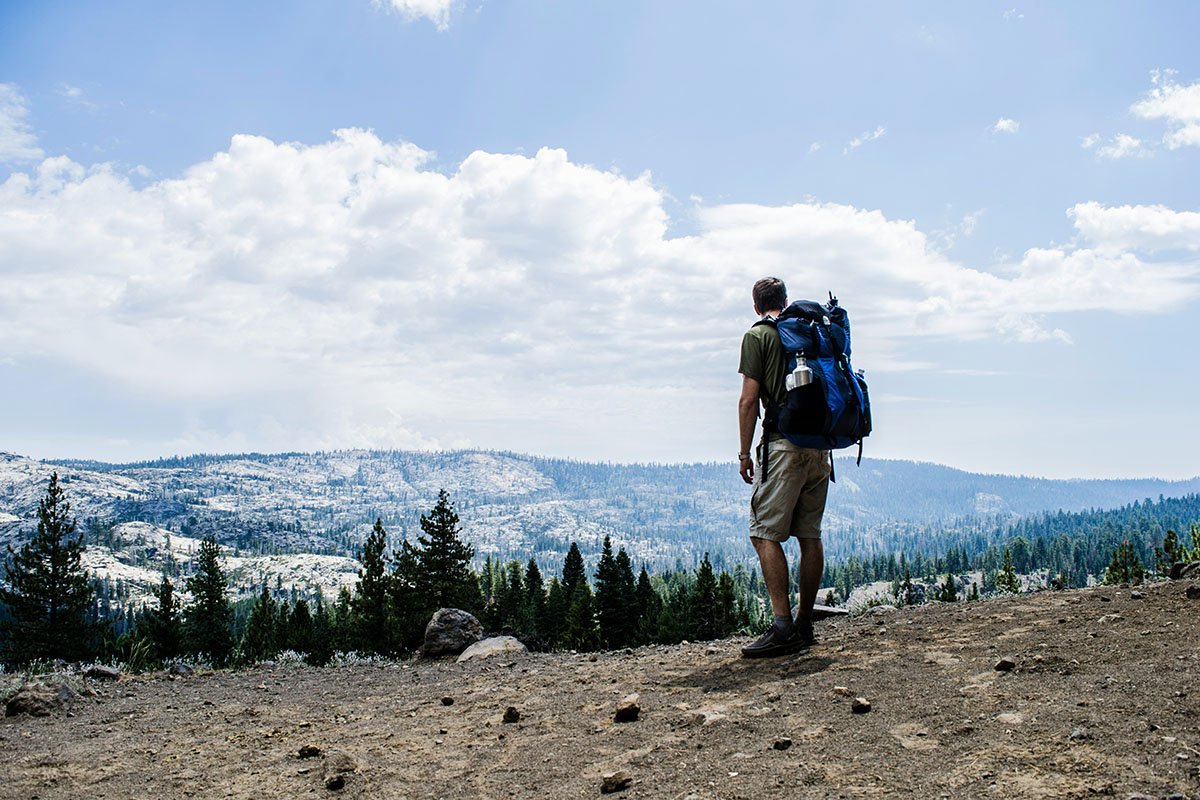
It’s time to brush up on the 10 essentials for hiking: navigation tools, sun protection, extra clothing, a light source, a first-aid kit, fire supplies, tools and a repair kit, food, water, and shelter. Each of these 10 essentials deserves a place on your day-hiking packing list, especially for particularly long or tough hikes.
In addition to your basics, like appropriate clothing, footwear, and a hiking backpack for carrying your essentials, include the following items when packing for a day hike:
Navigation Tools
- Paper map and compass
- GPS-enabled device, like a personal locator beacon, a hiking watch, and/or a fully charged smartphone
Sun Protection
- Sunscreen with an SPF rating of 30 or higher
- Hiking sunglasses with UV protection (wear sunglasses even in the snow to prevent snow blindness)
- Wide-brimmed hiking hat
- Lightweight outer shell or rain jacket
- Extra insulating layer (depending on the weather)
- Gloves and extra socks (in cold and/or wet weather)
Light Source
- Headlamp or flashlight with extra batteries
- Backup light source (i.e., a second small flashlight or glow sticks)
First Aid
- Small first-aid kit, including items like bandages, gauze pads, adhesive tape, and antiseptic wipes
- Pain relievers and anti-inflammatory medication
- Any personal medications you need
Fire Supplies
- Waterproof matches and a lighter
- Fire starters (these can be found on the trail, but it’s wise to bring some along)
Tools and Repair Kit
- Multi-tool
- Duct tape
- Basic repair kit
Food
- High-energy, nutrient-dense snacks (energy bars, trail mix, etc.)
- Meal(s) for longer hikes
Water
- Water bottles and/or hydration pack with water bladder
- Water-filtration straw or purification tablets
Shelter
Other Day Hiking Essentials
Depending on the situation, the following items may also be helpful, necessary, or desired for your day hike:
- Trekking poles
- Insect repellent
- Toilet paper or an antimicrobial pee cloth (or add multipurpose, biodegradable wipes to your first-aid kit)
- Camera gear and/or binoculars
- Safety whistle
- Bear spray
Day-Hike Packing and Organization Tips
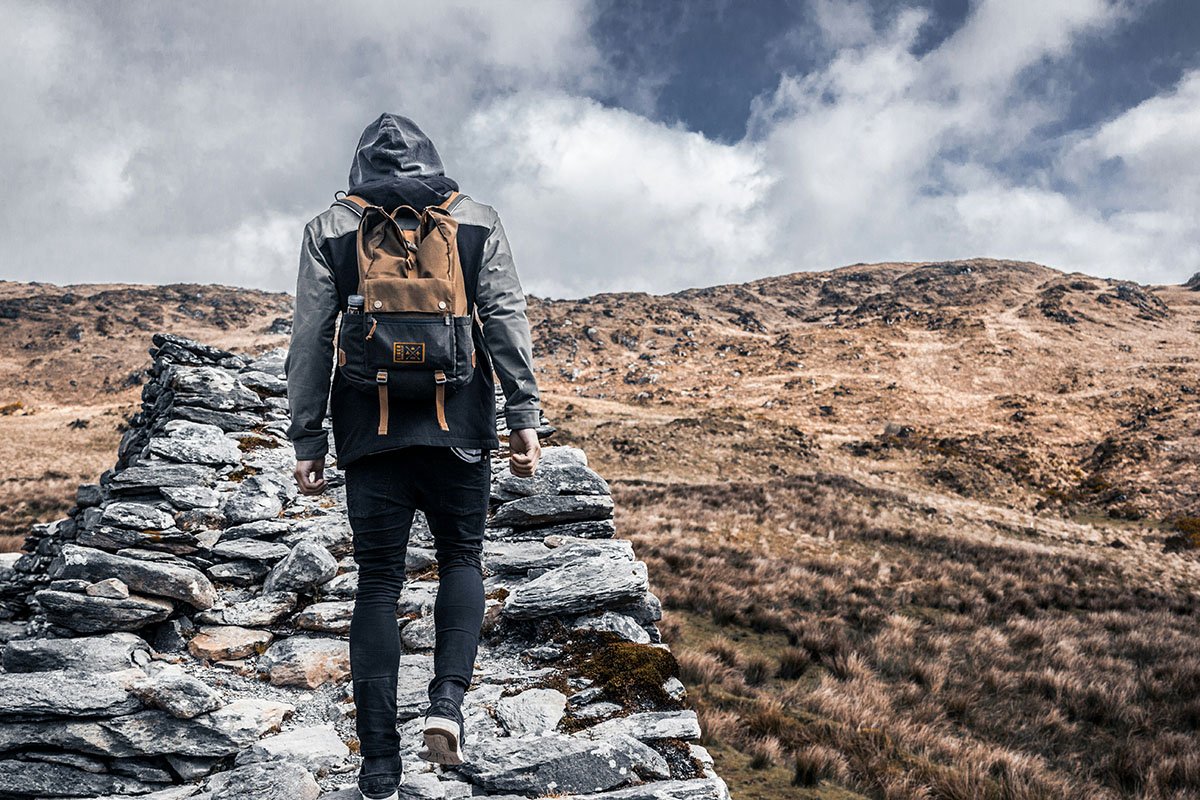
When packing for a day hike, consider what you’ll need handy, and pack those items at the top of your pack or in a front pocket. Your emergency gear can go at the bottom of your pack since you likely won’t need it.
If you’re going for a long hike and your pack is relatively heavy, do your best to distribute the weight evenly so you don’t end up with a particularly sore spot on your shoulders.
In wet weather, pack items in waterproof bags or containers to keep them from becoming drenched. (Fire starters or an extra insulating layer won’t help you much if they’re soaked.)
If you’re using trekking poles but won’t need them the whole time, make sure they fit inside your hiking backpack.
You’re Now Prepped and Ready to Go Day Hiking
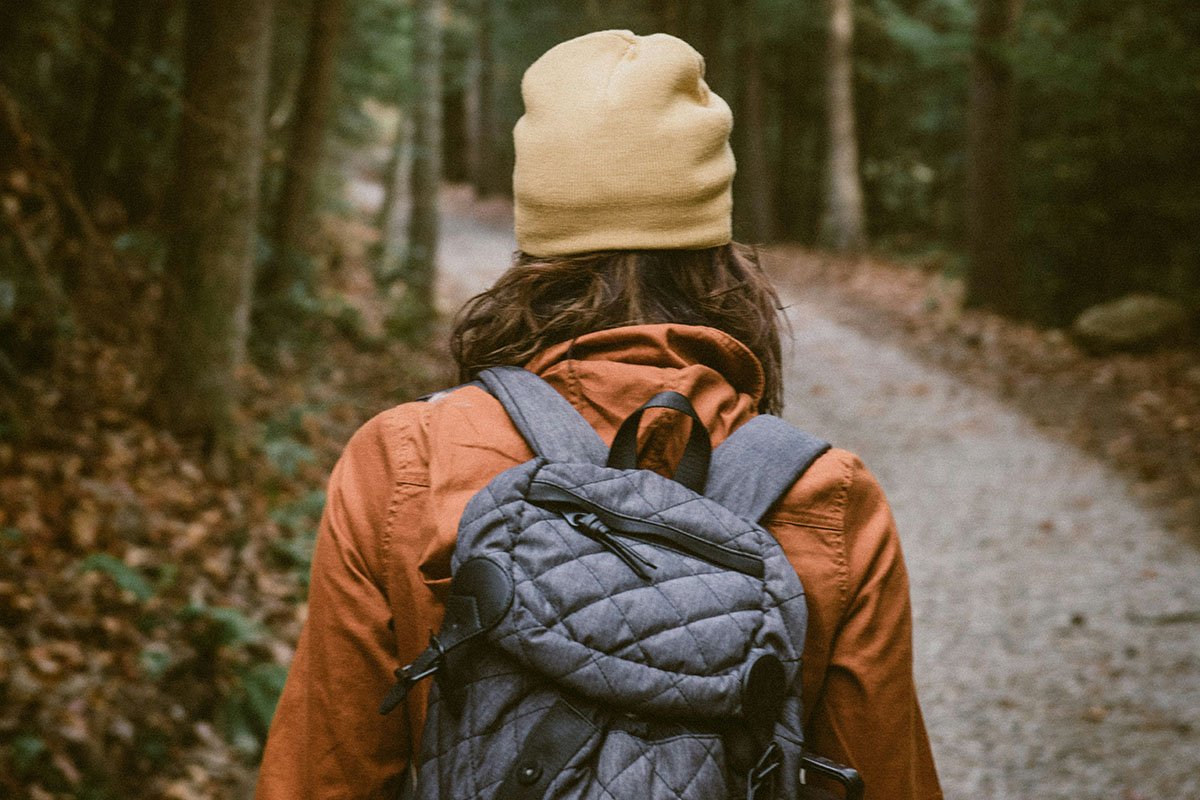
Now that you’ve done your homework and packed everything from a first-aid kit and toilet paper to duct tape and your trail runners (or hiking boots), you’re ready for a day hike.
Whether you’re taking a basic 2-mile trail to a point of interest or embarking on a day-long hike into and out of a canyon, being prepared will set you up for a fun and safe adventure.
Use our day-hiking essentials checklist as a guide, but be sure to make adjustments depending on location and season, as well as your particular needs. Always follow the tips outlined in Basic Logistics: How to Plan for a Day Hike, and remember to have fun!



